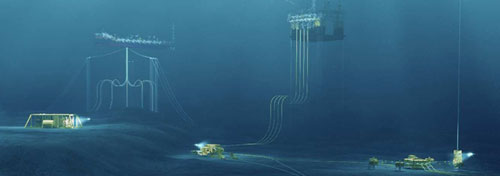In today’s cost constrained climate, the subsea and pipeline sectors are actively looking at alternative means to drive down costs, cut complexity and reduce project overruns. DNV GL, the leading technical advisor to the oil and gas industry, is launching two joint industry projects (JIPs) to investigate affordable composite components for the subsea sector and qualify technology for more efficient linepipe production processes. It is estimated that the JIPs could deliver a combined saving of £6.75 million.
The DNV GL Affordable Composites for the oil and gas industry JIP aims to reduce the cost of qualifying composite components for subsea use by replacing large scale tests with ‘certification by simulation’. Statoil, Petrobras, Petronas, Nexans, Airborne and the Norwegian University of Science and Technology (NTNU) in Trondheim, are participating in the project. The project is partly funded by the Research Council of Norway.
 The project, which could potentially deliver a 40 to 50% cost saving for certification and qualification of subsea composite components, will seek to validate new advanced material models by experimentation, with the main focus on predicting chemical ageing.
The project, which could potentially deliver a 40 to 50% cost saving for certification and qualification of subsea composite components, will seek to validate new advanced material models by experimentation, with the main focus on predicting chemical ageing.
“Composite components require full-scale testing to document long-term properties to achieve certification,” said Jan Weitzenböck, Principal Engineer, DNV GL - Oil & Gas. “A typical qualification campaign for a subsea composite component can cost in the region of ten to 100 million NOK. The results of this JIP could potentially save up to 16 million NOK for re-certificaiton of existing components.”
DNV GL will also develop processes to accept mathematical material models in the certification process. This will be documented in a revised edition of the DNV GL offshore standard for composite components (DNV OS-C501).
The driver for the New Material Solutions for Flowlines JIP is to explore cost savings by use of HFW/SAW (high frequency welded/submerged arc welded) pipes. Within the envelope of production parameters, these may be a very attractive alternative to the traditional seamless pipes, due to their lower cost and shorter delivery time.
The JIP has drawn the interest from pipe manufacturers, installation contractors and operators such as: Corinth PipeWorks, EMAS, JFE-Steel, Sumitomo, Tata steel, Tenaris/Tamsa and Woodside. The JIP is still open to additional partners.
“Though there is a considerable amount of research and full-scale reeling trials for the use of HFW or SAW linepipe, as well as a good track record in terms of executed projects, a joint systematic approach to optimize the design of these linepipe for reeling is lacking2. There is much to be gained through this project - we estimate that it could deliver a 20-30% reduction in pipeline material cost, corresponding to £4—5.5 million saving potential for a 30 km flowline,” said Leif Collberg, Vice President - Pipeline Technology, DNV GL Oil & Gas.
The JIP will be run as a Technology Qualification (TQ) project and is expected to result in a qualification plan that will require qualification testing by the manufacturers.

